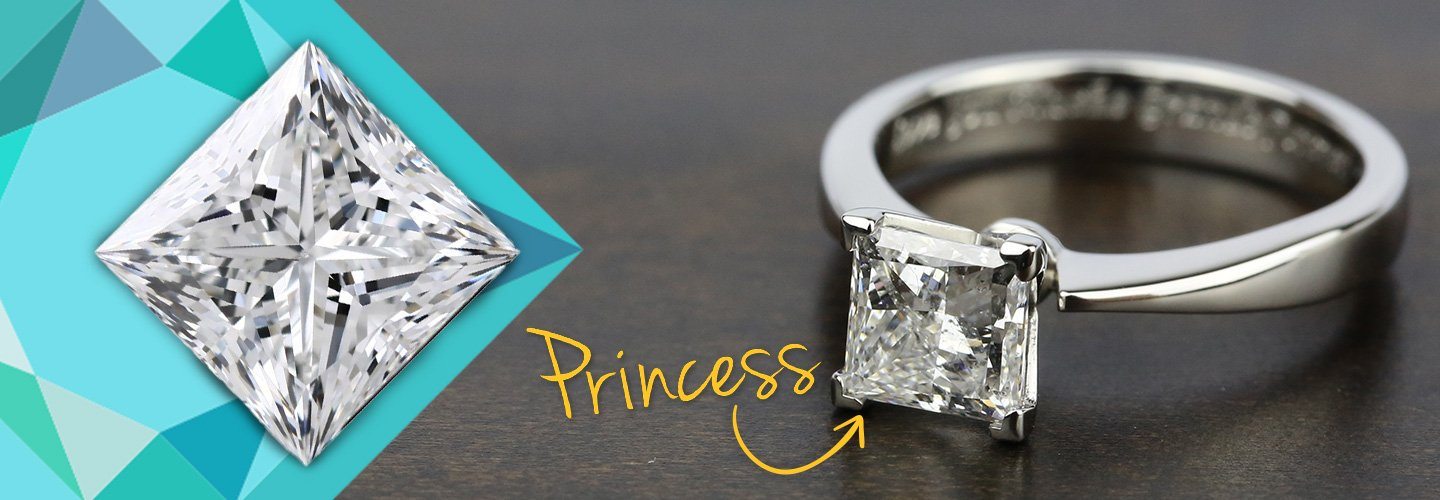Depth and Table for a Princess Diamond
Princess Cut Diamonds
Since it was first introduced in the 1980’s, the princess cut has seen a steady rise in its popularity among diamond shapes. Currently, the princess cut is the second most sought-after shape and is still rising. Models of flexibility, princess cut engagement rings are well suited for fans of both traditional and contemporary styles. One of the advantages of a princess cut diamond is that any existing inclusions are less visible because of the unique cutting and polishing techniques that are used. While the princess cut hides inclusions, it also shows color more clearly. With the proper proportions, however, this can be prevented.
Interestingly, princess diamonds are a great choice not only because they shine brightly, but because they tend to be less costly. When cutting a princess shape, there is less rough diamond lost because of the cutting process. In fact, the princess cut diamond is one of the most efficiently cut shapes utilizing more than 60% of the original stone’s weight. Relative to other diamond shapes, this keeps costs significantly lower and lowers the cost to you as the customer.
Princess Cut Diamond Guide
Every diamond shape has a length-to-width ratio that determines how a diamond will appear when viewed from above. When selecting a loose princess diamond, look for a length-to-width ratio between 1.0 and 1.25.
| Depth % Range for Princess Cut Diamonds |
|
|
理想
|
优秀
|
非常好
|
良好
|
|
|
75-66
|
76.5-64
|
78-62
|
84-56
|
| Table % Range for Princess Cut Diamonds |
理想 |
优秀 |
非常好 |
良好 |
|
|
75-66
|
77-64
|
79-62
|
82-55
|


